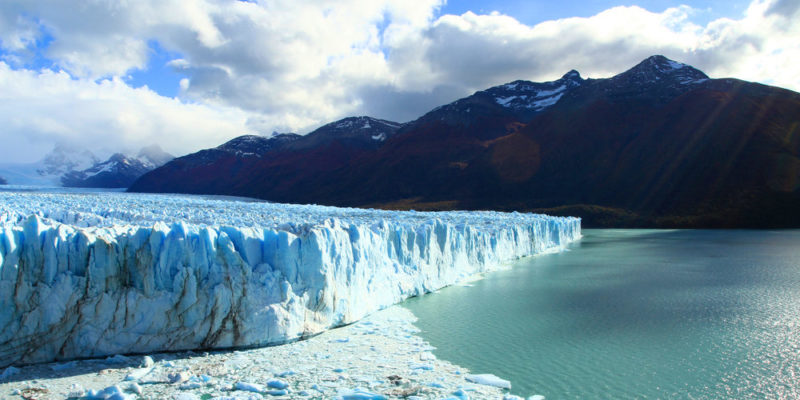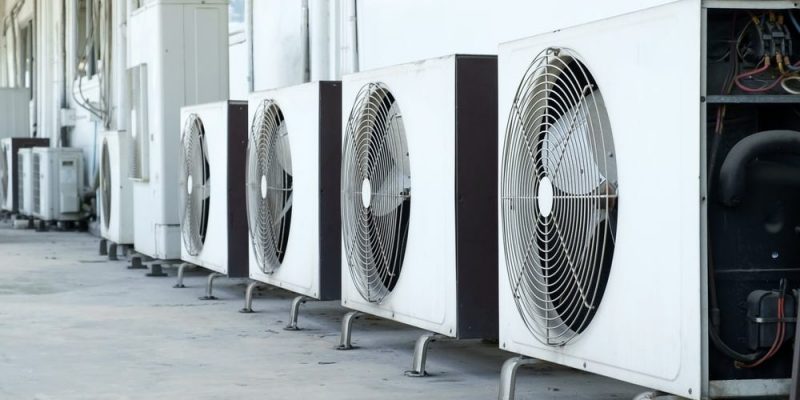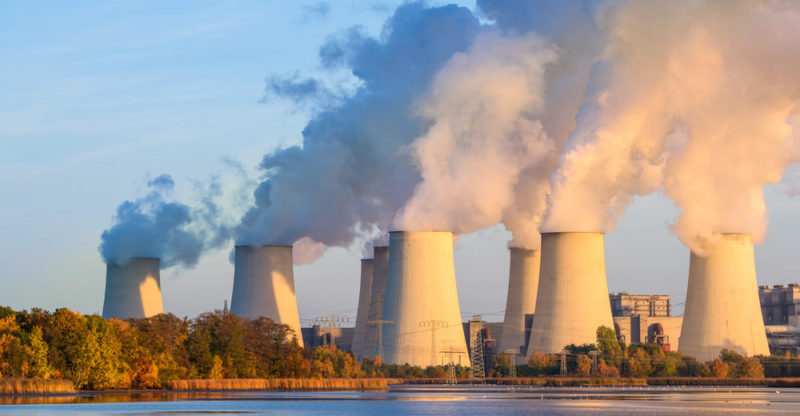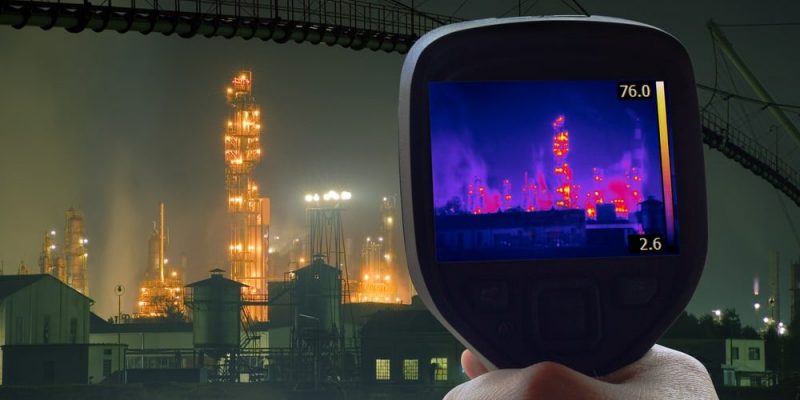We explain what thermal pollution is and the causes and consequences it presents. Also, its features and solutions.
What is thermal pollution?
It is known as thermal pollution or thermal pollution to a form of deterioration of the environment , especially water (since the air dissipates heat much more quickly).
It is caused by the presence of activities of diverse nature that cause a sustained increase in its temperature .
In other forms of pollution , chemical or physical elements are introduced that alter the properties of the environment and affect its delicate biochemical balance.
When we talk about thermal pollution, something very similar happens, but it has to do with the surplus of energy from certain human activities , which usually dumps into the environment in the form of additional heat, altering it physically-chemically.
This is a type of pollution that is much less mentioned but no less important . Numerous environmental organizations have taken up the fight against thermal pollution in recent years.
The catalytic effect of heat
The first thing to understand about thermal pollution is that heat has a catalytic effect on chemical reactions .
Catalyzing means accelerating them by introducing energy .
It can even cause reactions to occur that, to a few degrees lower, would not occur due to lack of energy.
This is precisely the great problem of thermal pollution: the unpredictable effects that heat causes in the environment .
Causes of thermal pollution

Thermal pollution is caused by those industrial or technological elements that introduce heat to the environment in an uncontrolled way. For example:
- Cooling water discharge. In many industrial facilities, steel plants or electricity generation facilities , processes are carried out at a high temperature and, when materials must be cooled , water taken from rivers , lakes or seas is used . It is returned after certain filtering and stabilization processes, but with temperatures much higher than those it had when it was taken in the first place.
- Cold water discharge. The same happens in gas liquefaction plants , a process that is generally endothermic (consumes energy), so it cools the matter around it. These plants discharge cold water into rivers and seas, which is also a form of thermal pollution.
- Deforestation and soil erosion. These factors generally increase the level or water bodies exposed to light solar, which causes the abnormal heating.
- Natural causes. The volcanoes and geothermal activity may also affect the heating of ground and ocean waters, having environmental impacts considerable.
Consequences of thermal pollution

The consequences of these changes in environmental temperature are especially noticeable in aquatic environments, and involve the following:
- Reduction of oxygen in the water. Hot water can retain smaller amounts of dissolved oxygen than cold water, due to its excess internal energy. This makes the water less suitable for life, suffocating animal species .
- Trophic imbalances. High levels of water temperature can accelerate certain reproductive processes while hindering others, causing some species to proliferate disorderly and others, on the other hand, to decrease in number. All this interrupts the delicate trophic balance of the ecosystem .
- Release of toxins. Warming waters catalyzes or produces uncontrolled chemical reactions, whose impact on ecosystems is unpredictable, causing massive deaths, uncontrolled proliferation of species or biochemical imbalances.
- Mass migration. Warming of water and air in certain regions can be inhospitable to endemic species, forcing them to leave their habitats and invade those of other species. This affects the loss of biodiversity and the depopulation of the regions.
Possible solutions for thermal pollution
The fight against thermal pollution requires joint efforts on the part of the State , private organizations and economic interests, which means reaching a difficult agreement.
Some measures to take in this regard are:
- Implement standardization measures before returning water to rivers and seas, such as cooling stations or natural heating.
- Recycle hot water from industrial processes instead of releasing it: for domestic heating or for re-injection and industrial reuse.
- Undertake the search for and use of substitute energy for nuclear energy, which uses boiled water to generate electricity.
- Strengthen ecological legislation concerning industrial activities and ensure that the deserved penalties are produced.
- Reforestation plans and expansion of protected areas.
Global warming

Thermal pollution is just one element added to the serious problem of global warming that our planet has faced since the end of the 20th century .
This process of increase in the temperature of the world has disastrous ecological consequences.
Among them is the melting of the poles and subsequent rise in the level of the world's waters , the desertification of large geographical areas and the gestation of more extreme climates .
In this sense, the fight against thermal pollution would also contribute to recovering the world's thermal balance.
Why is thermal pollution important?
The different points of view involved in thermal pollution agree that some measure must be taken to reduce the impact of these activities on the global thermal balance.
The difficulty of changing long-standing industrial practices , as well as the economic interests that depend on them, are some of the challenges that this type of initiative must face.
Considering the enormous ecological costs that the industrial model of society is beginning to show, they become more urgent than ever.
Examples of thermal pollution

Some examples of thermal pollution are:
- The accumulation of air conditioning equipment in urban areas , the rear parts of which exhale hot air, the temperatures of which can add to the air.
- The discharge of overheated water from steel plants, used to cool heavy metals (and often contaminated with solid fragments suspended in them).
- The indiscriminate logging of the Amazon in South America by the wood and paper industry , leaving vast regions of soil and water exposed to the sun .
Other types of pollution
Pollution in the world is the product of most human industrial activities, as well as some cataclysmic natural phenomena.
It can be classified according to its sources of pollution, as follows:
- Chemical contamination. Characterized by the presence of chemical and reactive agents in an environment that is not natural to them, causing various unpredictable chemical reactions.
- Radioactive contamination . It occurs when chemical substances of unstable atomic composition are spread through the environment, emitting subatomic particles capable of altering the DNA of living beings and causing mutations, cancer and other diseases.
- Petrochemical contamination. It is due to oil spills or other derivatives in environmental media, spreading these highly toxic substances and causing great ecological damage.
- Residual contamination. It is what produces everyday waste such as garbage, sewage and other secondary materials that are spread to the environment.
Thermal and radioactive contamination

Radioactive contamination occurs when chemically unstable waste is dumped into the environment.
It is generally accompanied on occasions by thermal pollution, since these elements also tend to release heat energy .
Obviously, radioactivity is much more worrisome in the ecological sense than its possible thermal emission.
Visual contamination

In addition to producing chemical and physical imbalances, the sources of thermal pollution also cause visual pollution .
This means that drainage pipes, the indiscriminate felling of forests , power plants, and other industries , in addition to producing changes in temperature, have a visual impact on the environment.
It is a type of aesthetic contamination , determined by its context, but which has implications for the emotional and mental health of human beings.
The above content published at Collaborative Research Group is for informational and educational purposes only and has been developed by referring reliable sources and recommendations from technology experts. We do not have any contact with official entities nor do we intend to replace the information that they emit.
Abubakr Conner brings a diverse skill set to our team, and covers everything from analysis to the culture of food and drink. He Believes: "Education is the most powerful weapon that exists to change the world." .
Leave a reply
Your email address will not be published. Required fields are marked *Recent post

Sport: What Is It, Types, Risks, Features, Characteristics and Examples

Dogs: Emergence, Features, Characteristics, Feeding and Breeds

Story: Definition, Elements, Structure, Features and Characteristics

